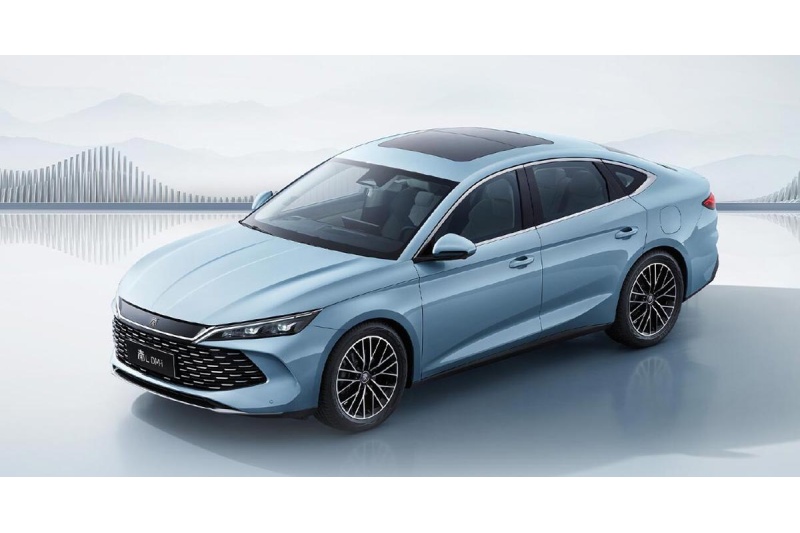The 2,100 km Range Plug-In Hybrid Electric Vehicle (PHEV) BYD Qin L Launched in China

At a Xian event, BYD’s new fifth generation DM system—which the car uses—was also unveiled alongside the debut of the Qin L DM-i. The Qin L’s twin car, the Seal 06 DM-i, which shares the same platform, was also unveiled at the event. The Qin L line includes five variants, ranging in price from 99,800 to 139,800 yuan (13,750 to 19,300 USD):
- 80 km DM-i Leading $14,750 USD or 99,800 yuan
- 109,800 yuan (15,150 USD) for 80km of DM-i Transcendence
- DM-i Leading 120km <119,800 yuan (16,550 USD)
- 129,800 yuan (17,900 USD) for 120km of DM-i Transcendence
- DM-i Excellence, 120 kilometers; 139,800 yuan (19,300 USD)
The Qin L is a BYD vehicle that belongs to the Dynasty series and features the new national wave dragon face design. As a result, the car’s front features a Qin-inspired design that is highlighted by a chrome bar and has a sizable grille underneath it. It’s interesting that the Qin L still has conventional door knobs. Stretching from the front fenders to the rear doors is a robust waistline. Inspired by traditional Chinese knots, the light cluster at the back forms a continuous stream from one side to the other.
The Qin L’s dimensions are nearly identical to those of the Seal 06 DM-i; the main distinction is its somewhat greater width. Its dimensions (l/w/h) are 4830, 1900, and 1495 mm, and its wheelbase is 2790 mm. Not to mention, the Qin L is larger than the Qin Plus. With a new E-type four-link independent suspension at the back and a MacPherson suspension up front, the suspension is the same as that of the Seal 06.
According to BYD, many Chinese knot features can be found throughout the interior, which was influenced by Chinese landscape art. Compared to the Seal 06.’s interior, this one is less hectic. There are several physical buttons that control various functions surrounding the gear selector. An 8.8-inch LCD instrument screen and a 15.6-inch rotating center infotainment screen are included. Six airbags, an electronic stability control (ETC), a mobile phone NFC key, automatic air conditioning, a driver-side window with one touch window control, a tire pressure monitoring system, and at least six speakers are standard on cars.
A panoramic sunroof, the DiPilot L2 driving assistance system, an electric front passenger seat, a dashcam, 18-inch alloys, an eight speaker sound system, and seat heating and ventilation are among the extra equipment found on higher specification vehicles.
In the Qin L and the Seal 06, BYD’s most recent fifth generation DM technology makes its debut. The new plug-in hybrid electric vehicle (PHEV) technology increases total efficiency by optimizing the work between the engine and electric motor. It achieves fuel consumption of 2.9 l/100 km in NEDC mode and 10.7 kWh/100 km in CLTC mode with AI energy consumption management.
This plug-in hybrid system is powered by a 1.5-liter engine that can provide up to 126 Nm of torque and 74 kW of maximum power. Lower-spec models use a 10.08 kWh battery, a 120 kW electric motor with 210 Nm torque, and an 80 km (CLTC) all-electric range. The car has a 120 km CLTC range thanks to the 15.874 kWh battery used in higher specification variants. These also make use of the more potent 160 kW, 260 Nm torque EHS160 motor. The comprehensive range (CLTC) is up to 2,100 km.